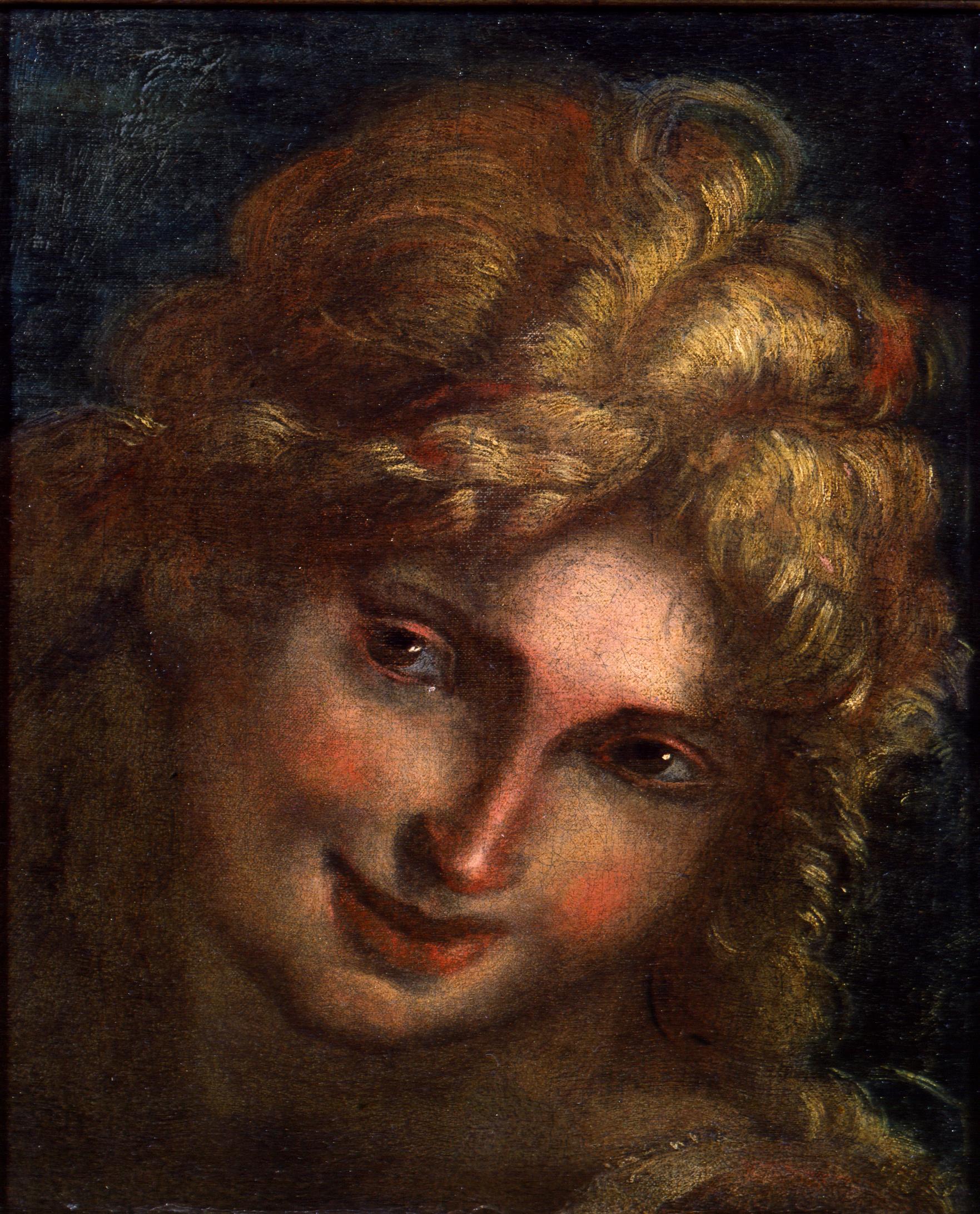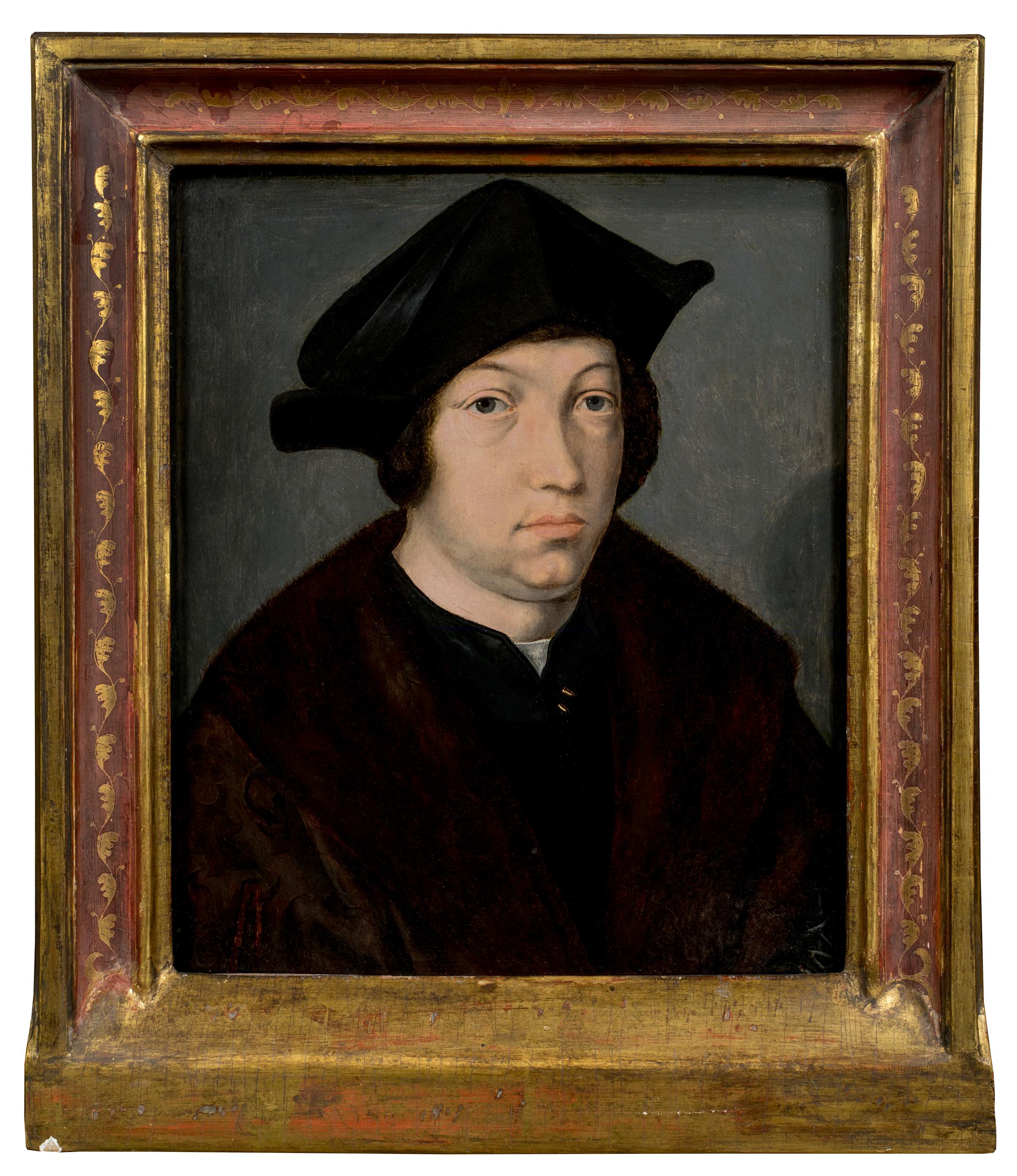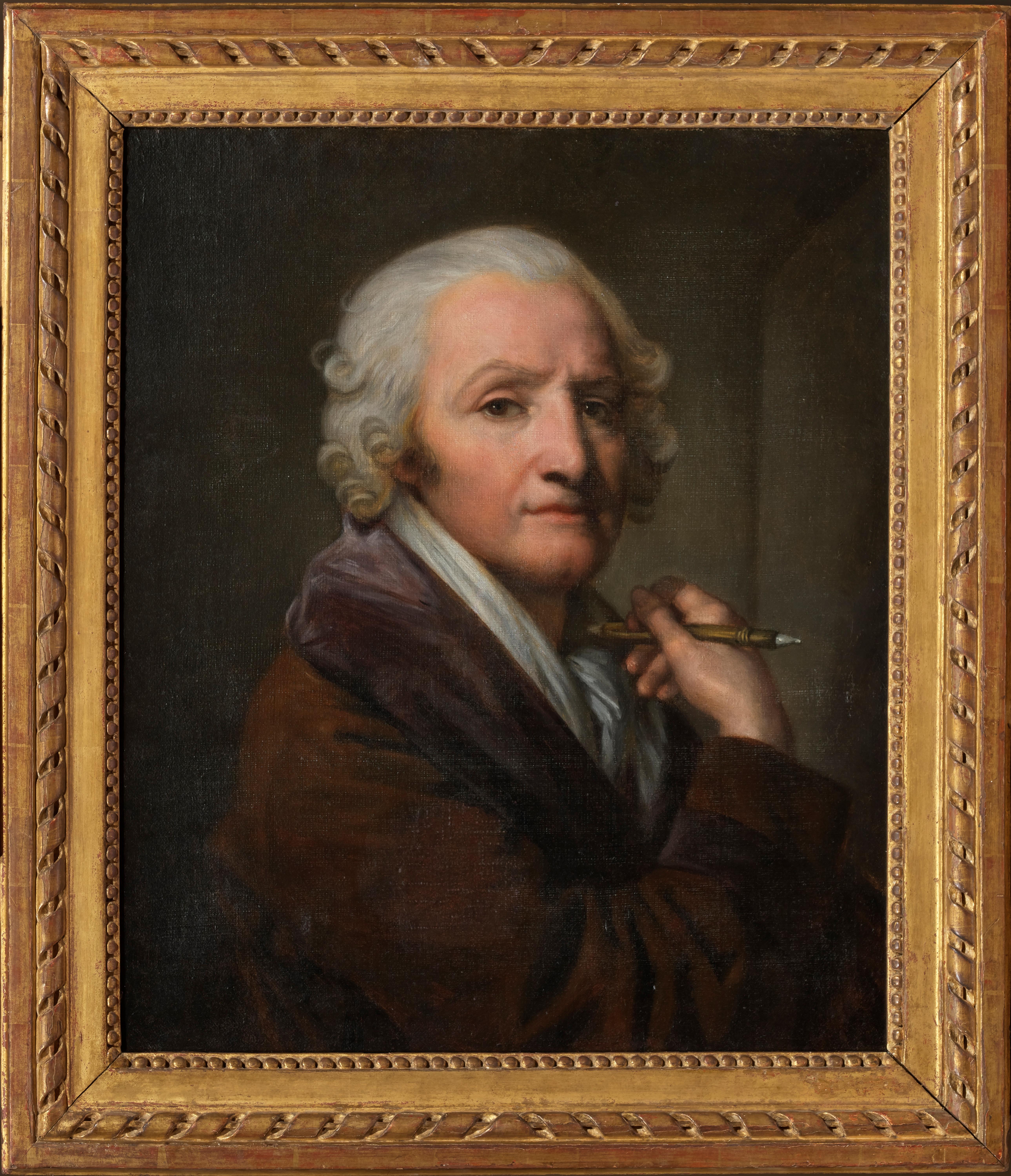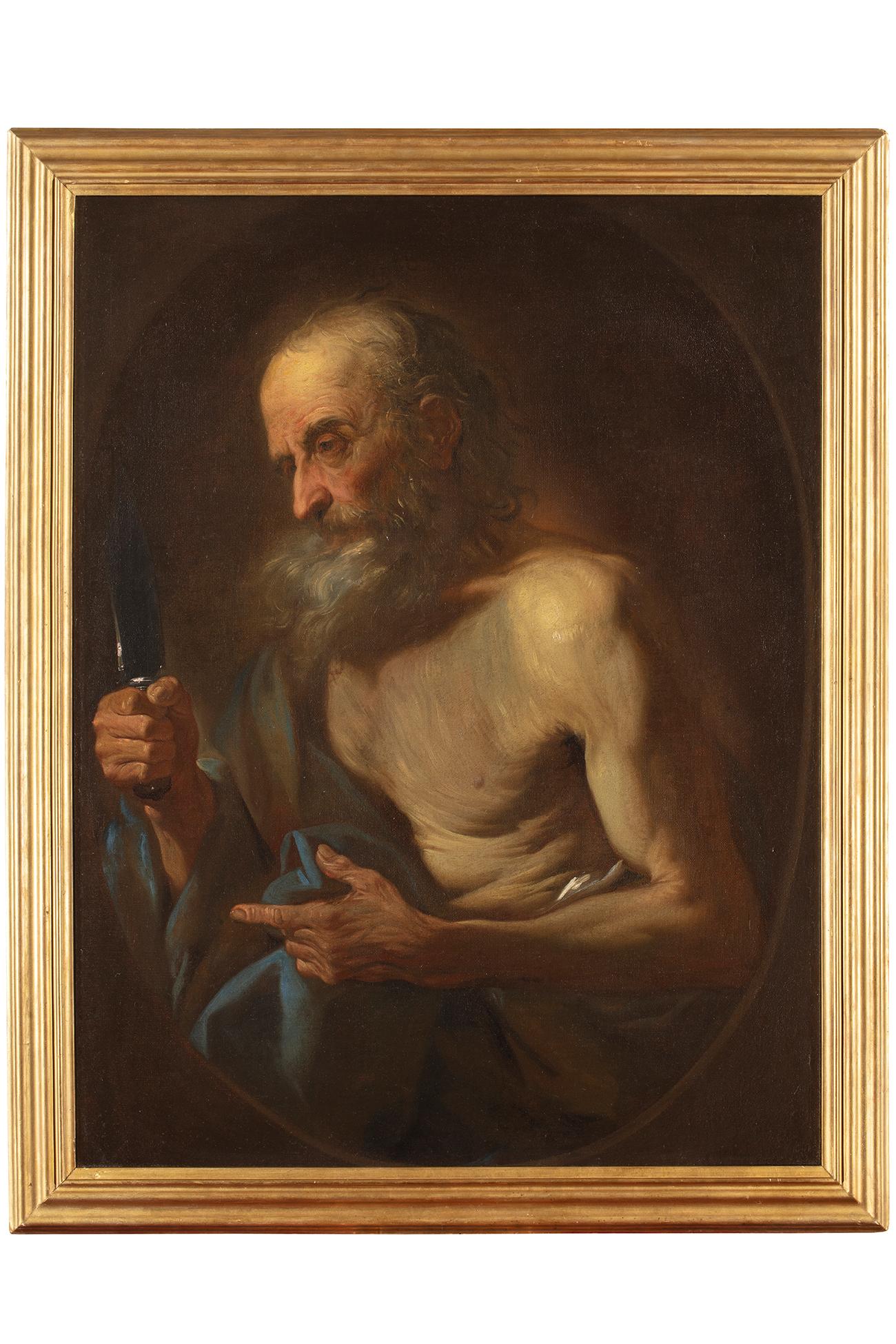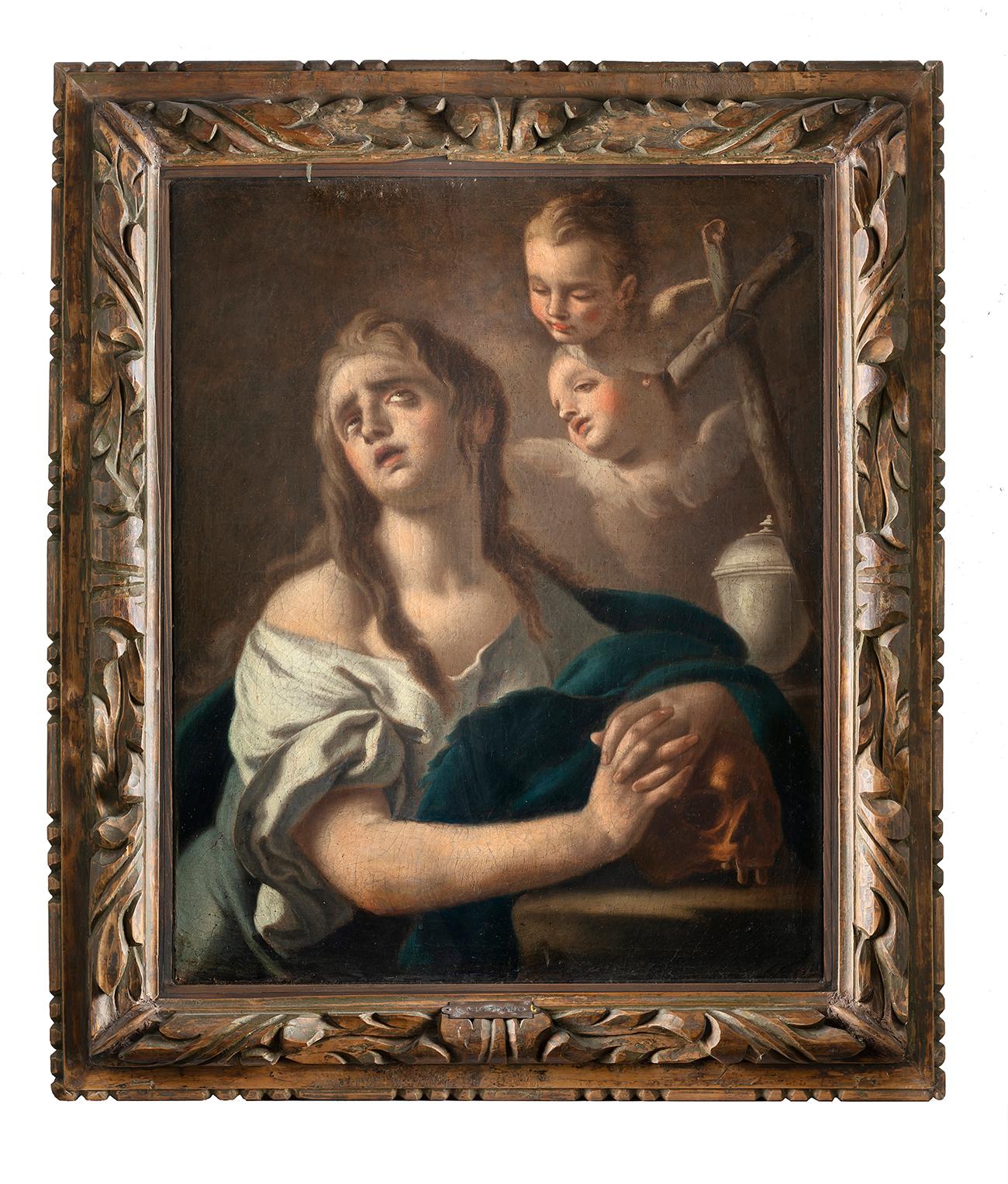Items Similar to Portrait of a Lady, After Sir Peter Lely (1610-1680) Oil Painting
Want more images or videos?
Request additional images or videos from the seller
1 of 6
After Sir Peter LelyPortrait of a Lady, After Sir Peter Lely (1610-1680) Oil Painting1670
1670
About the Item
Oil Painting After Sir Peter Lely (1610-1680) Portrait of a Lady
Housed in a Lely gold Leaf Frame.
Peter Lely:
In 1647 he became a member of the Painter-Stainers Company and by 1654 was described as "the best artist in England." After the Restoration in 1660 Lely was recognized as Van Dyck's successor as court and society painter; he became Principal Painter to King Charles II in 1661 and was granted naturalization in 1662.
- Creator:After Sir Peter Lely
- Creation Year:1670
- Dimensions:Height: 57 in (144.78 cm)Width: 47 in (119.38 cm)Depth: 4 in (10.16 cm)
- Medium:
- Movement & Style:
- Period:
- Condition:
- Gallery Location:Uppingham, GB
- Reference Number:1stDibs: LU122525420212
About the Seller
5.0
Vetted Seller
These experienced sellers undergo a comprehensive evaluation by our team of in-house experts.
Established in 1966
1stDibs seller since 2019
18 sales on 1stDibs
Typical response time: 1 hour
- ShippingRetrieving quote...Ships From: Uppingham, United Kingdom
- Return PolicyA return for this item may be initiated within 7 days of delivery.
More From This SellerView All
- Portrait of Girl with Flowers by Andrei Belichenko & Maria BoohtiyarovaBy Andre BelichenkoLocated in Uppingham, GBA Wonderful Oil on canvas by Andrei Belichenko & Maria Boohityarova. Two excellent Russian artists who have been exhibiting in France, their works are centred around exquisite detail...Category
2010s Realist Portrait Paintings
MaterialsOil
- Oil Painting Portrait, attributed to John Vanderbank (1694-1739)By John VanderbankLocated in Uppingham, GBOil Painting Portrait of John Campbell, 4th Duke of Argyll,, att to John Vanderbank (1694-1739) Housed in a swept frame which has been restored after photo. Canvas Size 50" x 40", Fr...Category
1690s Old Masters Portrait Paintings
MaterialsOil, Canvas
- Oil painting 'The Girl in The Red Dress' by William Frank Calderon (1865-1943)Located in Uppingham, GBOil on Canvas "The girl in the Red Dress" by W Frank Calderon, RA (no58) Exhibit 1911. Calderon was influenced by the "Art Nouveau"period, this painting shows his beautiful detailed...Category
1910s Art Nouveau Portrait Paintings
MaterialsOil
- Nude Painting by Andre Belichenko (Russian).By Andre BelichenkoLocated in Uppingham, GBNude with Silks by Andre Belichenko ( Russian) Andrei Belichenko was born in 1974 in Karaganda, Kazakhstan. He is a graduate of the Republican Art Schoo (1990). Andrei studied in t...Category
2010s Realist Nude Paintings
MaterialsAcrylic
- Oil Painting, Small Shooting Scene By Chapman Bayley (British, Active 1818-1832)Located in Uppingham, GBOil on canvas Shooting by the woods by Chapman Bayley (1818-1832) Early 19th Century gent standing by the woods with his two dogs shooting. Signed by the artist in original frame. Ch...Category
1820s English School Figurative Paintings
MaterialsOil
- Acrylic on Canvas Signed P.J. Crook 'The swimming Pool' 1989Located in Uppingham, GBAcrylic on Canvas by P.J.Crook titled 'The Swimming Pool' with the frame painted as part of the picture as well. PJ Crook lives and works in Gloucestershire ...Category
1980s Modern Figurative Paintings
MaterialsAcrylic
You May Also Like
- Italian 18th Century Oval Religious Oil on Canvas Painting with Saint DominicBy Francesco de MuraLocated in Firenze, ITThis beautiful Italian 18th Century old masters oil painting on oval canvas with giltwood frame is attributed to Solimena and features a religious scene. In this splendid oval-shaped painting are depicted Saint Dominic...Category
18th Century Old Masters Figurative Paintings
MaterialsOil, Canvas
- Head of an AngelLocated in New York, NYProcaccini was born in Bologna, but his family moved to Milan when the artist was eleven years old. His artistic education was evidently familial— from his father Ercole and his elder brothers Camillo and Carlo Antonio, all painters—but his career began as a sculptor, and at an early age: his first known commission, a sculpted saint for the Duomo of Milan, came when he was only seventeen years old. Procaccini’s earliest documented painting, the Pietà for the Church of Santa Maria presso San Celso in Milan, was completed by 1604. By this time the artist had made the trip to Parma recorded by his biographers, where he studied Correggio, Mazzola Bedoli, and especially Parmigianino; reflections of their work are apparent throughout Procaccini's career. As Dr. Hugh Brigstocke has recently indicated, the present oil sketch is preparatory for the figure of the angel seen between the heads of the Virgin and St. Charles Borrommeo in Procaccini's altarpiece in the Church of Santa Afra in Brescia (ill. in Il Seicento Lombardo; Catalogo dei dipinti e delle sculture, exh. cat. Milan 1973, no. 98, pl. 113). As such it is the only known oil sketch of Procaccini's that can be directly connected with an extant altarpiece. The finished canvas, The Virgin and Child with Saints Charles Borrommeo and Latino with Angels, remains in the church for which it was painted; it is one of the most significant works of Procaccini's maturity and is generally dated after the artist's trip to Genoa in 1618. The Head of an Angel is an immediate study, no doubt taken from life, but one stylistically suffused with strong echoes of Correggio and Leonardo. Luigi Lanzi, writing of the completed altarpiece in 1796, specifically commented on Procaccini's indebtedness to Correggio (as well as the expressions of the angels) here: “Di Giulio Cesare...Category
17th Century Old Masters Figurative Paintings
MaterialsCanvas, Paper, Oil
- Portrait of a ManLocated in New York, NYProvenance: with Leo Blumenreich and Julius Böhler, Munich, 1924 Dr. Frederic Goldstein Oppenheimer (1881-1963), San Antonio, Texas; by whom given to: Abraham M. Adler, New York, un...Category
16th Century Old Masters Portrait Paintings
MaterialsOil, Panel
- Portrait of Jean-Baptiste Greuze, painted on linen by his daughter Anna GreuzeLocated in PARIS, FRThis replica of the last self-portrait of Jean-Baptiste Greuze painted in 1804, executed by his daughter Anna at her father's side and recently rediscovered, provides us with a poignant image of the great artist, represented with panache despite the disillusions of life. 1. Jean-Baptiste Greuze Jean-Baptiste Greuze was the sixth child of a roofer from Tournus and retained a certain rusticity in his behaviour from his provincial childhood, beyond his taste for describing picturesque scenes of the countryside. He initially started training with a little-known painter from Lyon, Charles Grandon, before his genius was recognised in Paris where he became a full-time student of the Académie (of Painting) in 1755. He exhibited his work for the first time at the Salon during the summer of 1755, before leaving on a trip to Italy in the company of Louis Gougenot, abbot of Chezal-Benoît. Upon his return to Paris, Greuze became a prolific painter, participating widely in the Salons held between 1759 and 1765, to which he sent no less than 63 paintings: numerous genre scenes (The Marriage Contract, The Beloved Mother), but also portraits of his family circle, of courtiers and art lovers, or of his colleagues. The Academy closed the doors of the Salons to him in 1767 for not having produced his reception piece within six months of his reception, as was the tradition. He worked actively on this painting (Emperor Severus rebukes Caracalla, his son, for trying to assassinate him ) until the summer of 1769, tackling historical and mythological subjects for the first time. Once this was completed, he was then fully admitted to the Academy, but as a genre painter, and not as an historical painter, which had been one of the greatest humiliations of his life. Greuze then refused any participation in events organised by the Academy or its successor, the Academy of Fine Arts until 1800. Abandoning history painting, he gave a new twist to genre scenes, bringing them closer to history painting, as in this pair of canvases which constitutes some of his masterpieces: The Paternal Curse: The Ungrateful Son and The Paternal Curse: The Punished Son . Married in 1759 to Anne-Gabrielle Babuti, the daughter of a Parisian bookseller, his marriage was unhappy and his wife probably frequently unfaithful. The institution of divorce enabled him to record their separation in 1793, keeping his two daughters Anna-Geneviève, born in April 1762, and Louise-Gabrielle, born in May 1764, with him. Little is known about his daughter Anna except that she was herself a painter and lived with her father until his death. It is likely that most of the paintings she produced up to that date were attributed to her father, whose technique she shared to a great extent, making it extremely difficult to establish an autonomous corpus of her paintings. Greuze died in his studio at the Louvre on March 21st 1805. The attention paid to the expressivity of his characters and the emotional charge they convey enabled Jean-Baptiste Greuze to enjoy immense popularity with the eighteenth-century public, and they still constitute Greuze's true modernity. As the artist said, "I dipped my brush in my heart". Greuze was also an exceptional draughtsman and a portraitist of immense talent and exceptional longevity who painted both the Dauphin (the son of Louis XV and father to Louis XVI) and the young Napoleon Bonaparte. 2. Greuze's self-portraits Greuze was very much influenced by Dutch paintings during all his life. While the source of his inspiration for genre scenes can be found in Gerard Dou...Category
Early 1800s Old Masters Portrait Paintings
MaterialsLinen, Oil
- 18th Century by Pietro Bardellino Mary Magdalene Painting Oil on CanvasBy Pietro BardellinoLocated in Milano, LombardiaPietro Bardellino (Naples, 1731 – Naples, 1806) Mary Magdalene Oil on canvas, cm. 75 x 60 – with frame cm. 97 x 82 Antique shaped and carved wooden frame Publications: unpublished T...Category
Mid-18th Century Old Masters Portrait Paintings
MaterialsCanvas, Oil
- 17th century By Neapolitan maestro San Vincenzo Ferreri Oil on canvasLocated in Milano, Lombardia“Timete Deum et date Illi honorem quia venit hora iudicii Eius” (Fear the Lord and honour Him, for the hour of His judgement has come): the passage from John's Apocalypse (chapter 14...Category
17th Century Old Masters Portrait Paintings
MaterialsCanvas, Oil
Recently Viewed
View AllMore Ways To Browse
Lely Portrait
Antique Gold Leaf Frame
Oil Painting By Peter
King Charles
Peter England
Peter Lely After
Portrait Of Lady 17th
17th Century Lady Portrait
17th Century Portrait Of A Lady
Van Dyck Oil
King Charles Ii
Painted Portrait Of A Lady 17th Century
17th Century Portraits Lely
Sir Peter Lely
Sir Peter Lely Portraits
17th Century Sir Peter Lely Oil Portrait
Antique Female Portrait Painting
Cigar Painting
